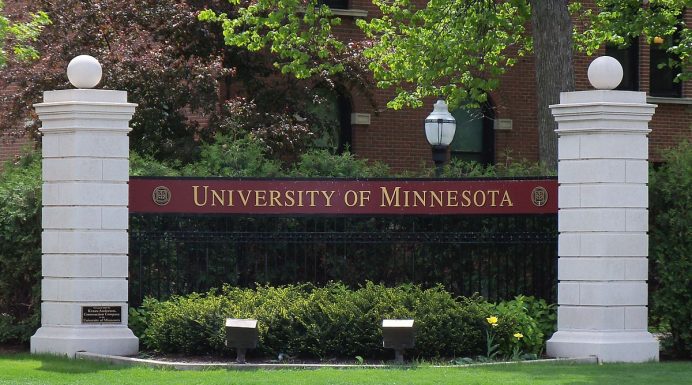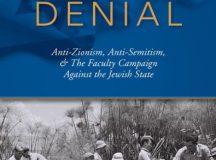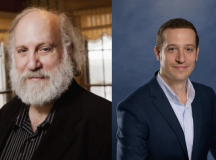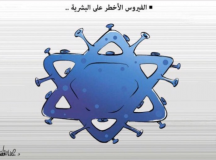Joe Lockard is associate professor of English at Arizona State University-Tempe.
Very few pay attention to faculty statements directed at administrations other than faculty. It is rare that they have political impact beyond colleges and universities. Faculty members nonetheless write and publish them as instruments for establishing a faculty voice.
Therein lies a problem: faculty statements can become blinkered issuances that use idealistic language to defend faculty privilege. The voice becomes haughty, elitist, exclusionary, and dismissive, often unconscious of its own social resonance.
Recent events at the University of Minnesota, an esteemed land-grant public university, evidence this problem in the rhetoric surrounding the denial of a directorship to Professor Raz Segal. A June 12 statement from the local chapter of the American Association of University Professors (AAUP) condemned the revocation of Prof. Segal’s proposed appointment as director of the university’s Center for Holocaust and Genocide Studies.
In this statement, community voices became an intrusive enemy rather than an ally. It references ‘outside lobbying groups,’ ‘outside groups,’ and ‘outside politically-motivated groups.’
Even faculty members who resigned from the search committee and objected on grounds of conscience supposedly acted ‘outside the norms of acceptable faculty conduct,’ as though objection constituted academic treason.
The statement’s incessant repetition of ‘outside’ seeks to label people as illegitimate actors, as obnoxious intruders interfering with internal decision-making. They putatively lack standing to express their opinions or be granted a hearing.
Where US colleges and universities near-universally emphasise community engagement, this statement rejects the idea that community organisations have legitimate consultative and participatory roles, even in relation to academic units that seek to interact with these communities.
Along these same lines, University of Minnesota faculty member Alexander Jabbari suggests that ‘the community’ is a misrepresentative term employed by an ‘outside’ group whose involvement would have ‘seriously negative consequences for academic freedom.’ Here the community metamorphoses into an actual enemy, one that seeks to suppress and deprive faculty of voice and agency.
This exclusion is a quasi-colonial, anti-democratic model of university-community relations, one where actors deploy ‘academic freedom’ claims to reject expressions of adverse community opinion and deny influence on decision-making.
The AAUP chapter’s denunciation of ‘outside’ voices leaves group identity unstated: these are Jewish organisations and Jews. Once again, as so often in history, Jews are the outsiders.
Earlier it was different. In 2012, the last time the Center for Holocaust and Genocide Studies undertook a search for a director, the Jewish community did have a representative on the search committee.
According to the Jewish Community Relations Council, this time ‘we were not even made aware that a search was occurring.’ That exclusion came despite the JCRC’s mission and community responsibility for Holocaust education, or the Council’s publicly-listed status as a Center partner.
Those responsible for the search did not care about Jewish public opinion even though the Center works closely with that community. There was manifest insularity in decision-making. If the hire had gone through despite Professor Segal’s outrageous victim-blaming public statements, there may well have been a community boycott of the Center.
Segal very visibly embraced a position that is anathema in the eyes of one of the major communities that the center seeks to serve. If the decision-makers involved in the hiring were surprised by the controversy, then they were not competent to make this decision. If they were not surprised, then we should ask searching questions about the mentality or motives behind the decision.
The entire story points either to administrative blindness, or a deliberate and insulting exclusion and disregard of broad Jewish community opinion.
Professor Segal complains about ‘crude and very dangerous’ political intervention and a ‘hateful campaign of lies and distortions.’ Quite the contrary, it was his extreme and offensive politics that provoked a community reaction and letter-writing campaign from people quite capable of reading Segal’s published opinions.
That reaction focused on Segal’s appointment to lead a community-engaged center, not his scholarship. The issue was Segal’s professional fitness for this role due to his extramural speech, professional fitness being a legitimate consideration recognised by the AAUP.
There is deep and untenable hypocrisy in protesting politics or political intrusion while functioning as a political actor.
Segal compounds this hypocrisy by asserting in a Democracy Now! interview that political expression by a broadly representative Jewish community organisation provokes antisemitism. So, Segal may speak and invoke his Jewishness: other Jews, the vast majority, should remain silent in his opinion. This does not augur well for community relationships.
Attempted defenses from both the AAUP chapter letter and Segal represent the content of extramural political speech as objective scholarship that merits the protections of academic freedom. This is a self-elevating claim for faculty to enjoy privileged speech in the political arena as an exempt special class immune from accountability.
Segal’s ‘interrelated scholarly and extramural speech’ asks for political action yet objects vehemently when there is adverse action for his professional future. A desire for public influence beyond the world of scholarship is commendable but it is unreasonable and unworkable to demand exemption from consequential reaction.
As former AAUP president Cary Nelson observes, ‘academic freedom protects your right to say what you want, but it doesn’t protect you from professional consequences for doing so.’
Demands for individual exemption from consequences, together with demands for community silence on higher education issues, instance raging social arrogance from academic quarters. Worse, the story and the AAUP chapter letter signal disregard and contempt for the Jewish community at-large and their expression of widely-shared communal sensibilities.
The call for exclusion of ‘outsiders’ in the Raz Segal case carried an implicit call for exclusion of the ‘wrong’ outsiders. Recently, the Center for Constitutional Rights, representing Segal, filed a public records request for university communications surrounding this case. This signals the prospect of not only the university but also community organisations and individuals having to mount a legal defense as punishment for expression of opinions.
There is legitimate concern in the United States over right-wing efforts to employ state legislation to reshape US higher education by limiting academic freedom. Recent legislation in Florida to ban critical race theory and limit tenure provide one example. Similar legislative efforts to gag academic free speech and attack terms of faculty employment have been witnessed in Texas and Ohio.
In these cases, the state is attempting to shape and control intellectual life on college and university campuses. This exercise has been tried many times, whether by the Austro-Hungarian empire against 18th and 19th-century Czech nationalists or the Communist Party on Chinese university campuses today. Inevitably state interference generates resistance, whether in a loud or quiet register.
By contrast, at the University of Minnesota community actors were asking to participate in campus institutions of concern and protesting their exclusion. This was community action, not state interference with academic freedom. Rather than inviting community representatives inside and welcoming them from the start, administrative decision-makers at the university forced community voices outside and set the stage for the problem that followed.
Campuses in the US and internationally will see many challenges over issues relating to Israel, Palestine, and the Middle East. In dealing with those questions, faculty and administrators should look towards legitimate community inclusion rather than exclusion parading beneath a misused flag of academic freedom.





































